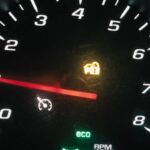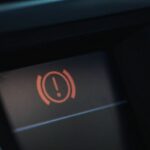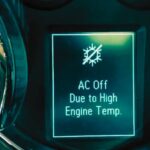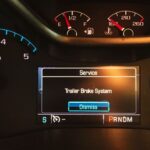Dashboard warning lights are very different in every brand of the modern car. It’s understandable for people to be confused about their meanings. I’ll discuss one of the most intriguing warning lights in this article. Lightning bolt symbol in the car – what this warning light means.
If you see a lightning bolt popping out of your dash, it indicates that your car is experiencing a problem with its Electronic Throttle Control system. To be sure, you need a code reader to scan your engine to see if there are any logged codes. This light could be a glitch where you must reset your car’s ETC system.
The fault could lie on the throttle body sensor, the throttle body itself, or the throttle body control motor. This motor controls the opening and closing of the throttle body as it consumes fuel while running.
Read on to learn more about the lightning bolt symbol in cars, what it means, the symptoms, the reasons why it develops issues, and their fixes.
Lightning Bolt Symbol in Car – What It Means

When a lightning bolt suddenly shows up on your dash, your vehicle’s Electronic Throttle Control system is having some issues. What you need is a code reader and use it to scan your engine to see if there are any logged codes.
This warning light could be triggered by a problem with your car’s ETC system, and you may need to reset it.
The fault could be an issue in the throttle body sensor, the throttle body, or the motor of the throttle body control. This motor controls the opening and closing of the throttle body as it consumes fuel while it runs.
Is It Safe to Continue Driving Even If thge ETC Warning Light Is On?
You can still drive your car with this warning light on. However, it is not advisable since you know it indicates that something is going wrong with your vehicle.
You need to check the ETC system before it can become a more severe issue in your vehicle.
This lightning symbol on your dash could mean any part of the ETC system has failed. Since there are several components of this system, you need to have them checked by a competent mechanic as soon as possible before driving your car as you usually do.
What Is A Car’s Electronic Throttle Control?
Offers Many Advantages Over the Old System
When the ETC system wasn’t invented, all drivers controlled their car’s throttle through wire cables connecting the throttle pedal and body.
Since the ETC system was invented and further developed, car manufacturers replaced the old system. It offered many advantages over the old way of controlling the throttle.
The safety features offered by the ETC system are the primary reason most modern cars use it today instead of the manual throttle control way.
Provides Increased Stability Control
This system offers increased stability control, an anti-lock braking system (ABS), plus several driving aids that allow drivers to have more control and faster reaction time over the throttle as they are operated electronically.
Benefits the Automatic Cars Most
The ETC system benefits automatic cars the most. It enables the transmission control and the engine to work in tandem to determine how much throttle input is required every time so that each gear shift will be smooth and relaxed.
Measures the Force You Apply on the Gas Pedal
The ETC system measures the force that you apply on the gas pedal. Then it sends the signal from the sensor to the motor. This motor opens the throttle in direct proportion to the force you apply on the accelerator pedal.
Old System
That’s how the ETC system differs significantly from the system used in older cars. Older cars use a cable that connects the gas pedal to the throttle. In the old method, the force applied by the driver on the gas pedal determines the opening of the throttle, which then influences the amount of gas released.
This old method is not very efficient because it causes an increase in the consumption of fuel. For this reason, car design engineers developed the ETC system.
Reduces Fuel Consumption
The ETC system reduces fuel consumption when the transmission is shifted to higher gears. This system gets the transmission to shift and open the throttle while it controls the same speed.
Additionally, while the vehicle is cruising, the system can make micro corrections to the throttle valve to reduce gas consumption and pollution without the driver being aware.
The ETC system benefits modern cars in multiple ways, although not very much. However, even if it only offers small technological improvements, they still count when adding them.
What Are the Signs of a Failing ETC System?
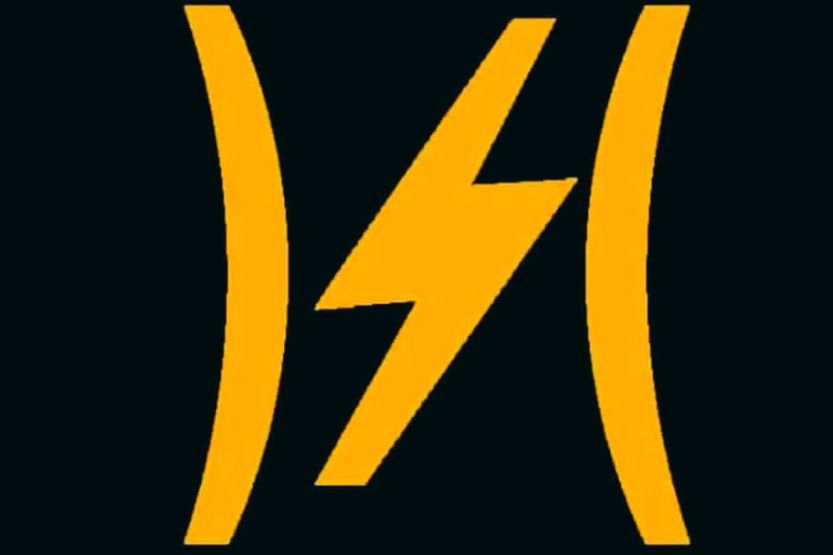
If you are wondering about the symptoms of a flawed ETC system, there are plenty of them. Here are some of the symptoms of a flawed ETC system:
1. Warning Light Flashing Intermittently
If, on your dash, you see the lightning bolt warning light flashing intermittently, even after you have done pedal resets, then that means you have issues in your ETC system. You need to ask a qualified mechanic to diagnose and fix this issue.
2. Problems When Accelerating
One of the symptoms of a faulty ETC system is if you have problems when you step on the gas pedal. Another sign is if your car accelerates when you are not stepping on the gas at all. If you are experiencing these things, you need to check your car’s ETC system.
3. Fuel Consumption Increases
If you are spending more on your gas than usual, look at your ETC system. It might be the cause of your increased fuel consumption.
In other words, decreasing fuel mileage is another sign of a failing ETC system. If the lightning bolt warning light accompanies this, it is a sure sign that your ETC system is displaying some issues.
4. Erratic Idling
If your idling is erratic and surges randomly, it indicates that your car’s ETC system is malfunctioning. The idling of your car can also be either low or high. Along with this inconsistent idling, your engine could also be misfiring, stalling, or it runs with rough idling.
There are other signs of a failing ETC system, and they include the following:
- Hard starting engine
- Engine stalls at stoplights
- The car gets into “Limp Mode.”
- Car speed fluctuates while cruising
How Does the ETC System Works?
The way a car’s ETC system works is pretty simple. It has a potentiometer on the throttle pedal, which measures the driver’s input. The more the throttle is opened, the more voltage is applied to the car’s engine control module (ECM).
Then the ECM sends the signal to the actuator or motor of the throttle body. This action will open the throttle valve as accurately as the driver wants it to. Then there’s a second potentiometer, the position sensor of the throttle that sits on the other side of the throttle valve motor.
This sensor measures the actuator’s input and sends the data to the ECM. Based on that data, the ECM determines if the actuator’s input is consistent with the driver’s input. The lightning bolt warning light will appear on the dash if the information is different.
Again, what does a lightning bolt symbol in a car mean? A lightning bolt on your dash signals a malfunctioning electronic throttle control system or a throttle body control motor. The latter controls the opening/closing of the throttle body.
What Causes the ETC to Malfunction?
There are three primary reasons your car’s lightning bolt warning light will pop up on your dashboard. According to cartreatmwents.com, they are the following:
- Faulty pedal or wiring linkages
- Malfunctioning pedal system
- ETC system problems
Aside from these three leading causes, there are other reasons why your vehicle’s ETC system can fail. They are the following:
- Problems with the ACV butterfly valve
- The malfunctioning sensor of the throttle body actuator
How to Fix a Bad ETC?
There are only two general ways you can fix a failing ETC system: you can clean it if it’s full of dirt, or you can replace it entirely. Generally, if the ETC system goes bad, the usual culprit is a failed sensor of the throttle body motor or actuator.
If you know how to inspect this actuator visually, you will see if it is full of carbon deposits. In such a case, you can try to clean the actuator and see if that solves your problem. If not, you need to replace the actuator or its sensor with a new unit.
RepairPal also recommends taking your vehicle to a qualified mechanic when its ETC system warning light pops up on your dash. A certified mechanic is the best person to diagnose and fix whatever caused the warning light to come on.
How to Replace Your Car’s Electronic Throttle Body?
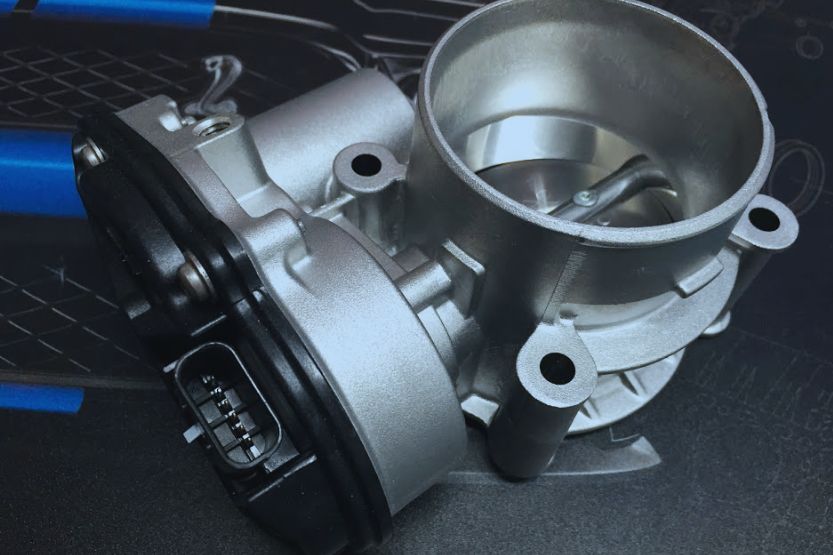
If you have determined that your vehicle’s electronic throttle body is failing and have decent handyman skills and the appropriate tools, you can try replacing it yourself. Doing this task is simple. It will only take you more than one-half hour to do it.
Tools
The tools you will need are the following:
- A set of socket wrench
- Standard screwdrivers, flat and Phillips
- Rags for cleaning the gasket seat of the throttle body
Steps
The steps in replacing an electronic throttle body are the following:
- Remove the intake hose from the throttle body and the other vacuum lines
- Disconnect the connector of the throttle body
- Remove the bad throttle body
- Clean the seat of the old gasket; remove it if it is already damaged, and replace it with a new gasket.
- Set the new gasket on its seat
- Install the new throttle body
- Re-connect all the vacuum lines and the throttle body connector.
- Re-install the intake hose over or above the new throttle body
How Can You Reset the Electronic Throttle Control System?
If you have fixed the issue of the ETC system, you need to reset it to remove it from your dash. Here is the procedure for resetting the ETC system:
- Insert your car key inside its hole and turn on the ignition. Don’t start the engine yet.
- Initially, you will see all the warning lights on your dash. Wait until all these lights fade from the dash. The Check Engine light may be the only light that will remain on the dash.
- Slowly depress the accelerator pedal fully to the floor.
- Then slowly release the pedal until it returns to its original position.
- Now, turn off the ignition key.
- After a while, turn on the ignition key and start the engine.
- Check if the throttle body is already working by stepping on the accelerator and see if the engine will throttle up.
How Much Will It Cost to Fix an Electronic Throttle Control?
According to RepairPal, if a bad sensor causes the problem, the usual fix will only cost you somewhere between $150 and $200. However, if your concern is the butterfly valve, including throttle body issues, you may spend about $650 and up for the repair.
For problems involving the throttle position module or pedal linkages, the usual repair can cost approximately $438. It would be best to ask a certified mechanic to diagnose the problem and recommend the appropriate fix to get the most accurate repair cost.
In Closing
If a lightning bolt suddenly pops out of your dash, it means there is a problem with your car’s Electronic Throttle Control system.
To be sure, you need to use a code reader to scan the engine for any logged codes. The light could mean there’s a glitch, and you need to reset the ETC system of your vehicle.
If the light remains on your dash after resetting the light, there is an underlying cause of the problem. You need to ask the help of a certified mechanic to diagnose the issue and recommend the proper fix.


